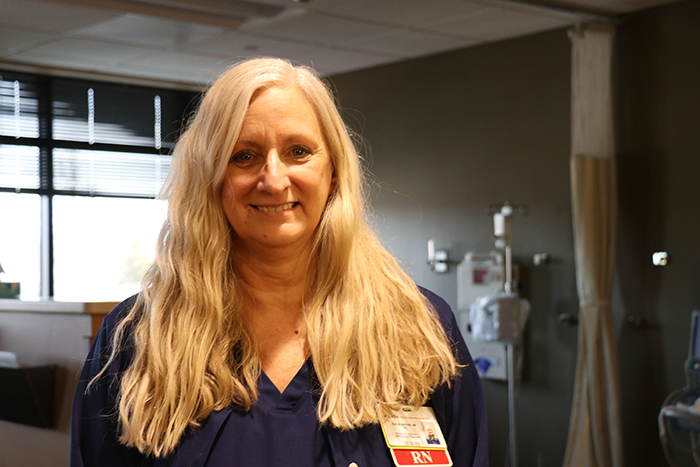Keeping people healthy: The role of rad techs in health care
Radiologic technologists make up the third-largest group of health care professionals in the nation, according to the American Registry of Radiologic Technologists. As professionals who create images of patients’ bodies using medical equipment, they help physicians diagnose and treat patients.
CMH was honored to be part of the statewide Health Care Career Day on Feb. 24 sponsored by the Missouri Chamber of Commerce, Missouri Hospital Association and Missouri Department of Elementary and Secondary Education. As part of this event, four radiologic technologists at CMH shared about what they do and why they love their jobs. You’ll have to watch the video to hear their full responses. Keep reading for a summary of their responses and more information about pursuing a career in radiologic technology.
Jessica Breesawitz — Registered Radiologic Technologist since 2011 and Registered Computed Tomography Technologist since 2014
Most days I’m doing a full schedule of CTs, which involves 25-30 a day, depending on how busy we are. We do a lot of contrast studies, so we start IVs, do a contrast injection and then do the CT scans and then we’ll discharge the patient, take the IVs out and send the results along to the doctor. I like that it changes every day.
Christie Hill — Registered Diagnostic Medical Sonographer since 2011 and Radiologic Technologist since 2007
On a typical day for a sonographer, we’re going to review a patient’s history and look at any prior imaging they’ve had before we get them for their appointment. When we’re done taking images, we also write a report for the radiologist that gives our impression of what we saw during our scan, any major abnormalities or anything the radiologist should pay special attention to.
Ben French — Registered Radiologic Technologist since 2019
I chose X-ray because every day’s kind of like a puzzle. You have to get the best views possible with what the patients can do. You have to think outside the box, about what’s going to help the patient and help them get better.
Amber Letterman — Registered Radiologic Technologist and Magnetic Resonance Imaging Technologist since 2000
MRI uses your body and radio waves and a big magnet to take pictures. We can image any part of the body. They average about 20 minutes, and they are very detailed pictures and can help the doctor diagnose the problem. I know that when people come in, they’re hurting, but I like to help them find the problem and help them get a resolution to their symptoms.
Path to becoming a Registered Radiologic Technologist
Becoming a radiologic technologist requires a minimum of three years of education. Steps include:
-
- 1. Complete prerequisite courses, usually taking one year to complete.
- 2. Complete an associate degree in radiography, typically taking two years to complete, or a bachelor’s degree in radiography.
- 3. Pass the certification exam through the American Registry of Radiologic Technologists to become a Registered Radiologic Technologist.
- 4. Start your career as an RRT taking X-rays.
- 5. Pursue further education to receive certification in additional forms of imaging. The most common fields include Computed Tomography (CT), Magnetic Resonance Imaging (MRI) and sonography, more commonly referred to as ultrasound.
- For more information about becoming a Registered Radiologic Technologist, visit the American Registry of Radiologic Technologists website.
Scholarships and employee loan forgiveness
Whether you are getting ready to start a radiography degree or already have one, Citizens Memorial can help you pay for your degree. Citizens Memorial’s Medical Excellence Scholarship is available to anyone living in the eight-county service area who is pursuing a degree in a healthcare-related field and agrees to work for CMH after degree completion. The scholarship deadline usually is the end of February, and recipients are notified in April.
CMH’s employee loan forgiveness program will pay up to $5,000 per year for a maximum of $20,000 over four years to help employees in eligible positions, including radiology technicians, repay college loans. If you receive funds from the Medical Excellence Scholarship, your CMH loan forgiveness amount may be reduced by the prior amount received.
So what are you waiting for?
Start making plans now to become a Registered Radiologic Technologist. Find a college with a radiography degree, apply for scholarships and start studying. You’ll become a “rad tech” and fulfill your calling to help others.




